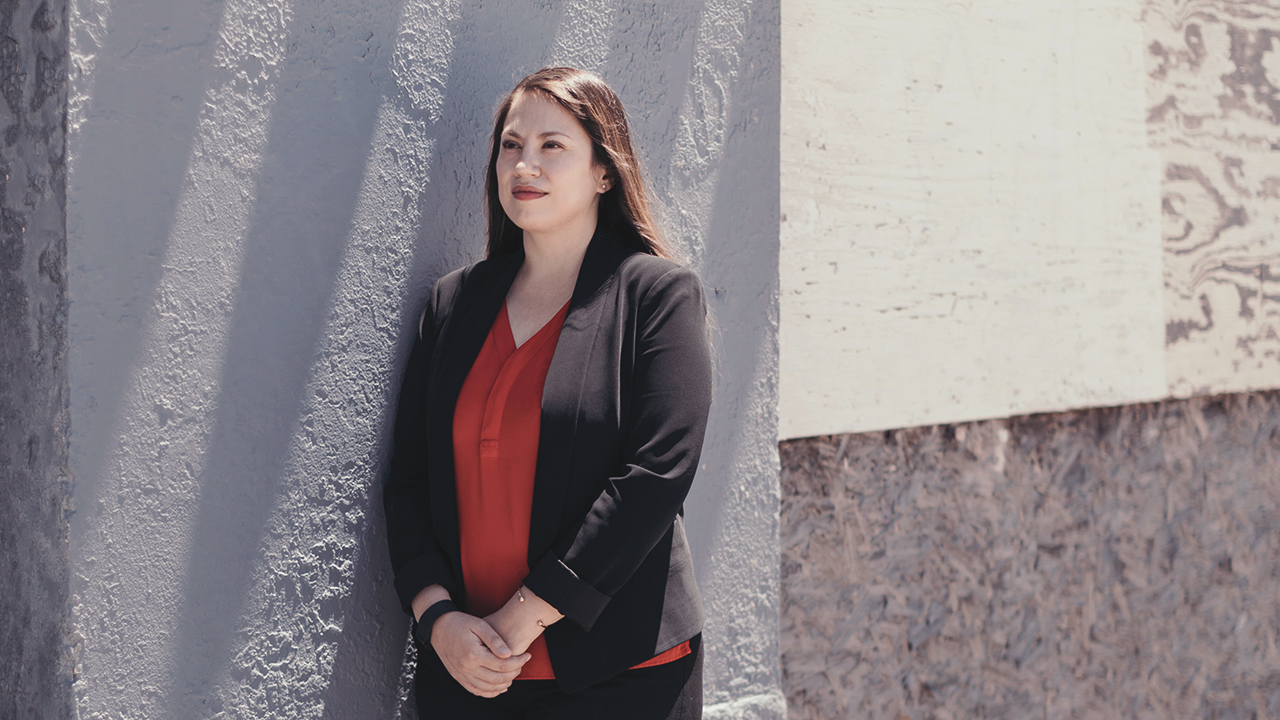Improving Health, Improving Lives
From community health fairs to molecular research, urban universities are working to improve public health.

The future of health care is unfolding in a small exam room at the Vecino Health Center clinic in Houston’s Denver Harbor neighborhood.
Katherine Smith, a pharmacist with the University of Houston, scans a 52-year-old woman’s record of her blood glucose readings as they talk about her diet and how often she tests her sugar levels.
“You’ve been doing a great job with your diet, so we’re going to change your medications,” Smith tells her, noting that the readings are still too high.
She writes a prescription to adjust the insulin dosage, slipping out of the exam room to talk about the new symptoms with her patient’s primary care doctor. It’s a seamless collaboration intended to better serve their patients.
In the nation’s fourth-largest city, Denver Harbor is one of too many neighborhoods where public health problems proliferate among the social and economic issues that exacerbate them. Forward-thinking urban universities are increasingly tackling these health challenges head on, working to find solutions to the problems that beset their neighbors and delivering the care residents need – all while preparing the health care workforce of the future.
The impact of urban universities can be great, said Dr. Donald Briscoe, medical director of Vecino Health Centers and program director of the Family Medicine Residency at Houston Methodist Hospital.
“They can train the next generation of practitioners who will eventually work in the community,” he said. “They can perform research to improve the quality or delivery of care, or they can put their expertise in the field to directly impact the community around them.”
That’s all happening at UH, from optometry students and faculty working at neighborhood eye clinics in Houston and around the state to research teams seeking to explain the physiology of obesity and addiction. Students train to become clinical psychologists, optometrists, pharmacists, nurses, audiologists, dietitians, social workers, biomedical engineers and health educators.
Students, as well as faculty, are at work on the ground, in classrooms and in laboratories.
The challenges are enormous. More than 10 percent of adults in Texas have diabetes, mostly type 2 diabetes, a metabolic disorder caused by the body’s resistance to insulin.
It is the sixth leading cause of death in Harris County, ranking fourth and fifth respectively for African American and Hispanic residents.
More than two of every three Texans are overweight or obese, putting them at heightened risk for everything from high blood pressure to cancer. Behavioral health and lifestyle issues take a toll, too: Across Texas, nearly half a million people are projected to die prematurely from tobacco use or second-hand smoke, and an estimated 4 million have an alcohol use disorder.
They need help, and many need it close to home.
“It needs to be in walking distance,” says 64-year-old Debra Dixon, who has type 2 diabetes. She has health insurance but often relies on community health screenings and other services offered in her Third Ward neighborhood near UH. “A lot of us don’t drive.”
Urban universities can train the next generation of practitioners who will eventually work in the community, they can perform research to improve the quality or delivery of care, or they can put their expertise in the eld to directly impact the community around them.
—Dr. Donald Briscoe
Medical Director, Vecino Health Centers
Try to walk through many urban neighborhoods, and you’ll notice something missing.
Sidewalks. Or parks. Or public spaces to exercise.
Rosenda Murillo, an assistant professor at the University of Houston College of Education, spots such obstacles to maintaining good health as she travels around the city. She saw the same situation in the predominantly minority neighborhood where she grew up in the Dallas-Fort Worth area.
Murillo, who researches health disparities, particularly affecting Latino adults, understands the seriousness of the challenges from a personal and academic perspective. Several of her family members have died from heart attacks, strokes or other complications from heart disease – a huge public health threat that can be addressed in part by better access to recreation and physical activity.
A study she published in 2015 found that as foreign-born Mexican Americans lived longer inthe U.S., the amount of time they spent sitting was a significant factor in an increased likelihood of obesity.
In the health classes she teaches on campus, Murillo said she talks to students about the link between culture and diet. She wants to help them relate. Murillo had her own revelation as a college student more than a decade ago, when a professor talked about health disparities.
“I thought, ‘Oh my gosh, this is what is happening in my community,’” she said “Individuals in these communities really do want to learn how to improve their health. Sometimes they just don’t have the resources,or there are barriers.”
Removing barriers is what UH and other urban universities are working to do.
Next Story:
Getting Health Care in the Community
Improving public health starts by addressing the needs of Houston's marginalized communities and providing critical services and information to those who need it most.